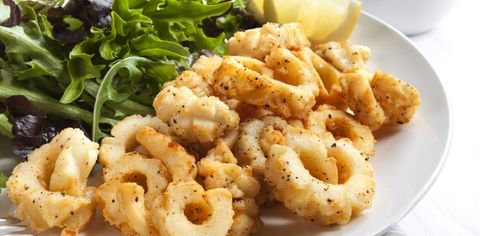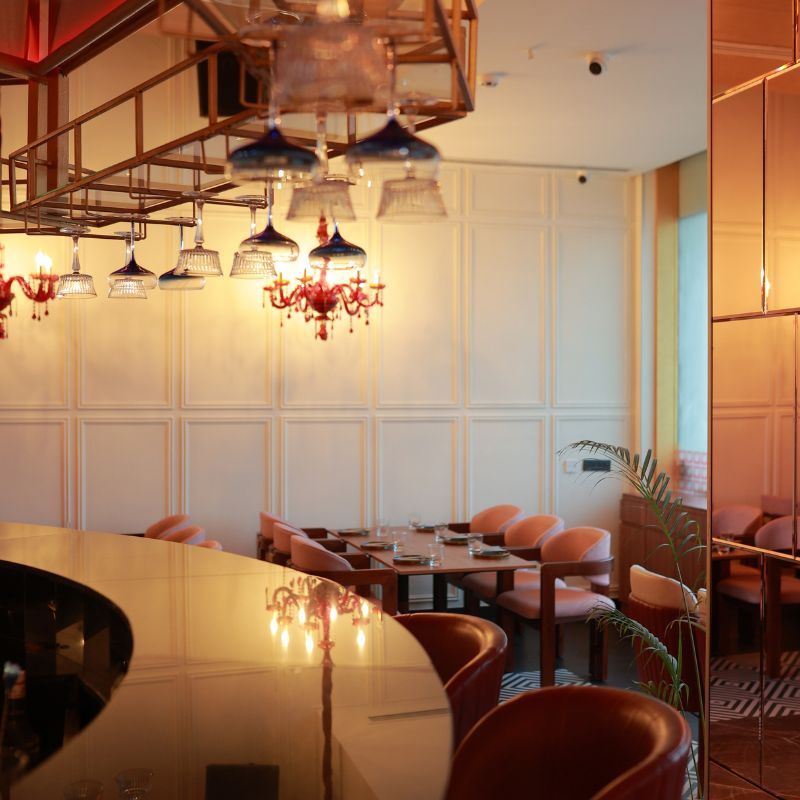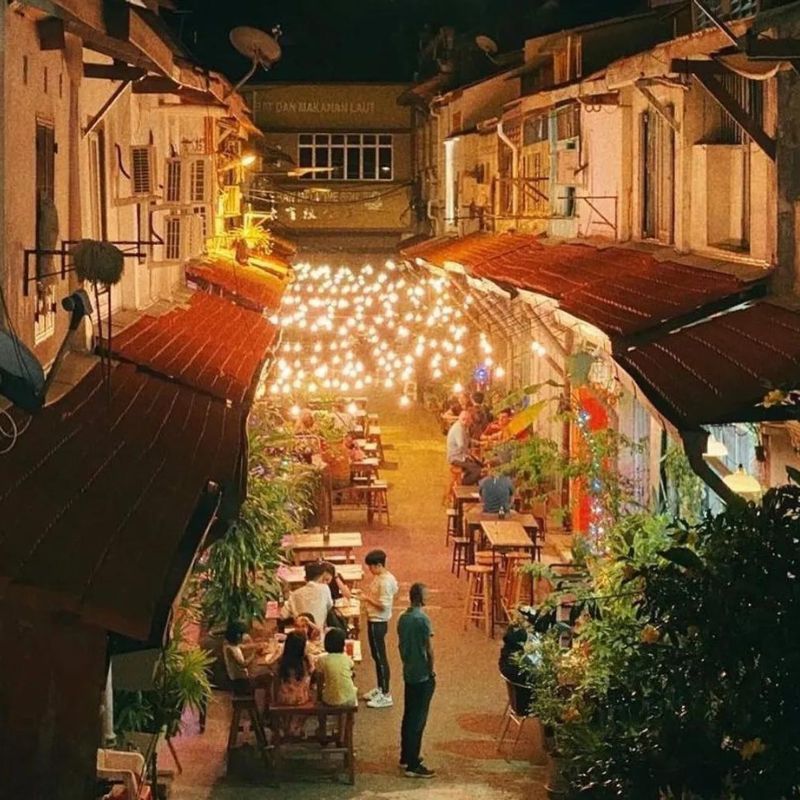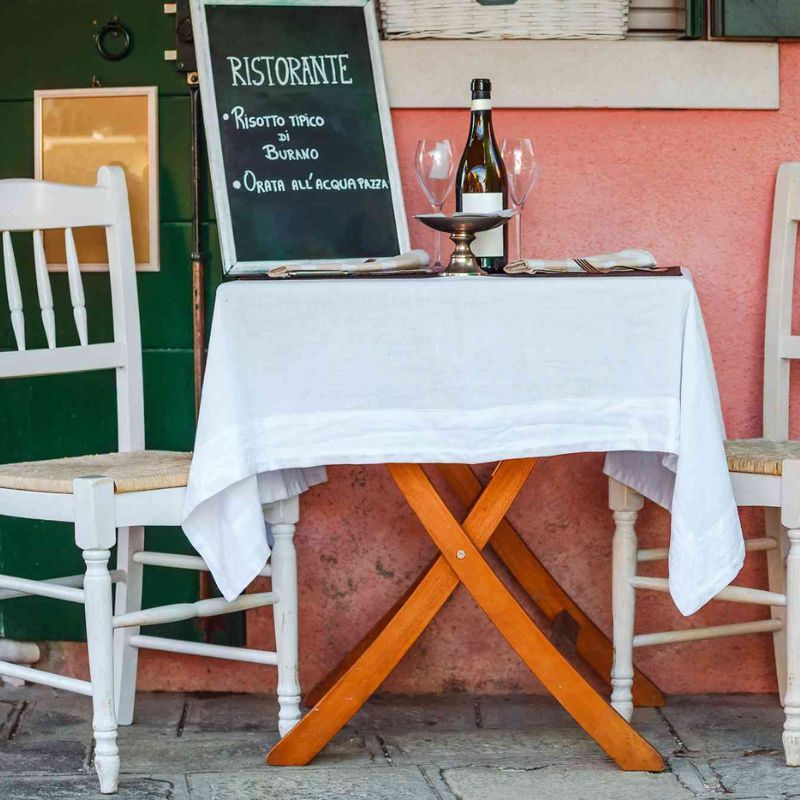
What is a national dish? In most places around the world, it can be easily defined as any dish that is popular among the people and forms an essential part of a country’s culture and identity. While some countries such as Peru have an official national dish — ceviche — with a day dedicated to it by the government, many others don’t. But almost every nation does have at least one homegrown speciality that’s a favourite among locals and foreigners, alike. From the swankiest restaurants to humble street-food stalls and even households, this dish can be found everywhere. For certain gastronomic creations, their phenomenal popularity has gone beyond borders to find its place in kitchens overseas. Here’s a collection of our favourite national dishes — some of which hold their title unofficially — and the best local places to try them. By Manas Sen Gupta
Asado, Argentina
View this post on Instagram
Creation of the gauchos, or cowboys, the Asado can most certainly be called the national dish of Argentina. It gets its name from the technique of cooking meat on a skewered metal grill called asador. The meat can be beef, pork, sausages, sweetbreads or lamb. Once grilled, the slightly salted meat is topped with chimichurri, a condiment made from dried oregano, and served on chopping boards as finger food. Eating Asado is typically a weekend family affair in Argentina.
If you’re in Buenos Aires, consider stopping by at El Ferroviario for your Asado fix. It is a grand place with 325 seats and is mostly packed to capacity, especially during the weekends. From families to huge groups of friends, almost everyone in the western province of Greater Buenos Aires appears to have this place as their top destination for special events.
Argentine flags, disco balls and garlic wreaths hang from the ceiling of the building, which resembles a huge tavern from the inside. You can try food ranging from grilled meats (beef, pig and chicken) and pasta to empanadas, but the speciality here is Asado ancho ribs, which are cooked for three to four hours. A single portion is large enough for a small family. Also, worth tasting is the Playboy salad, which consists of chicken, hard-boiled egg, ham, and hearts of palm and pineapple with a cold sauce known as salsa golf.
Salt and Pepper Squid, Australia
View this post on Instagram
The mention of Australian cuisine typically calls to mind succulent meat pies and hearty barbecues. Thus, it might come as a surprise that a dish that is now increasingly being called the country’s national dish is originally a Chinese preparation. Aussie celebrity chefs such as Dan Hong of Cantonese restaurant Mr Wong, Luke Nguyen of Vietnamese eatery The Red Lantern, and MasterChef Australia winner Adam Liaw have all — on separate occasions — dubbed salt and pepper squid as an up-and-coming contender. It’s a pretty uncomplicated dish: the salt-and-pepper batter is applied to the squid, which is then fried until crisp. Simple, isn’t it? The dish can also be made using other combinations of spices, such as Chinese five-spice and ground ginger. The seafood is usually served as a snack and tastes great with wine or beer.
If you are in Melbourne, visit Chin Chin for the dish. You may have to wait for over an hour on weekends but guests say it is worth it. The serving is small but tastes so good, you might be tempted to reorder it. The squid is deliciously tender and encased in a light and crispy batter, with a refreshing zing from Vietnamese mint.
Ceviche, Peru
View this post on Instagram
You know that a dish holds a very special place in the heritage of a country when they have a national day for it. Yes, Peru celebrates the National Ceviche Day every year on June 28. Ceviche (also spelt Cebiche) is an ancient dish prepared using marinated fish and can be had anywhere — from high-end restaurants to street-side stalls — in this South American country. Perhaps the best thing about ceviche is that it is one of the healthiest dishes you can eat. Citrus juice, usually lemon or bitter orange, is used to marinate the raw fish and spiced with peppers. It is served either at room temperature or cold. Though sea bass is the most commonly used fish, the dish can be prepared with any other type of fish found in the region. Variations of ceviche, which borrows its name from the indigenous Quechua language word ‘siwichi’, can be found in other South American countries, too.
Try it at La Mar in Miraflores neighbourhood of Lima. It is a restaurant by Gastón Acurio — one of Peru’s most famous chefs. Since the fish is served fresh, the eatery is open only from 12 pm to 5:30 pm on weekends and closes 30 minutes earlier on weekdays. Among the ceviche are De Pesca Del Día (which features the seasonal catch of the day) and De Conchas Negras (which features black clams). Besides the dish, other must-haves are chaufa la mar (Chinese seafood rice), ravioles de cangrejo (crab ravioli) and la gran cacerola la mar (casserole of halibut, jumbo prawns and crab). They also serve a wide range of beer, wine and cocktails.
Smørrebrød, Denmark
View this post on Instagram
The dish which literally means “butter and bread”, is an open-face sandwich. Anything from vegetables to beef can be used as a topping on a slice of buttered dark bread. So, you have combos like smoked salmon with dill and remoulade, blue cheese with apple and bacon, and beef and arugula with horseradish creme fraiche among the many delectable variations of Smørrebrød. Dating back to the Middle Ages, the dish holds such an important place in Danish culture that Danish-Norwegian poet Johan Herman Wessel (1742–85) wrote a poem titled “Kierlighed og Smørrebrød” (Love and Smørrebrød) on it.
While exploring Copenhagen, drop by Amalie near the Amalienborg Palace. It offers different types of smørrebrød, mainly with fish toppings such as herring, salmon and shrimp, which taste amazing. Amalie is a small place in a historic building, open only for lunch. Besides its smørrebrød, guests have shown admiration for the service. For the people who don’t know the language, employees make sure to explain the dishes and help in ordering. If you go for the ‘lunch plate’, you’d receive a four-dish menu with several fish-based smørrebrød.
Fondue, Switzerland
View this post on Instagram
If there are two delicious things Switzerland is synonymous with, they would be chocolate and cheese fondue. The latter is basically melted cheese served in a pot, which diners dip bread into. The type of cheese used depends on the Swiss region you are in. You’ll find Gruyère in the French-dominated areas and Camembert cheese in the Normandy parts. Among the Swiss cheeses used are the trademarked Emmentaler, the 700-year-old Appenzeller, and Vacherin Fribourgeois — which also lends its name to a type of fondue.
Besides cheese, other ingredients include wine, garlic, paprika, mustard and mountain herbs. But in the region bordering Italy, where Fontina cheese is used, wine is replaced with milk and fondue is called fonduta.
The dish has an illustrious history — it was first mentioned in the eighth century BC by Homer in his epic poem “Iliad”. Over centuries, fondue underwent minor changes with its ingredients until it emerged in the modern form in the 19th century. In 1930, the Swiss Cheese Union — a now-defunct cheese cartel — successfully campaigned for the fondue to be declared as the country’s national dish.
Visit Le Gruyérien if you are in Geneva; its delicious fondue is not too rich or cloying and is accompanied by crispy bread. The fondue at Le Gruyérien can contain any of these delectable Swiss cheese varieties — the moitié-moitié (half vacherin and half gruyère cheese), a slightly lighter vacherin fribourgeois, or goat’s cheese.
And in case you stop in Zurich, visit Fribourger Fonduestübli — the restaurant claims that “you don’t have to go to western Switzerland for good fondue”. Only two different cheese blends are used in its traditional fondue, both of which come from Fribourg in the canton of the same name. Slices of cured meat, potatoes, bread, pickles, onions and pineapple are served with creamy cheese. The dish pairs well with white wine that can be ordered separately.
Irish Stew, Ireland
View this post on Instagram
Known as “ballymaloe” or “stobhach gaelach” in Gaelic, the peasant dish is traditionally eaten on special occasions such as St Patrick’s Day. Made using mutton and root vegetables such as potatoes, the usually thick broth can be savoured at any of Ireland’s famous pubs. In some variants, barley is added to the stew.
If you are in Dublin, head to Brazen Head for a delicious bowl of this stew. The 12th-century pub will leave you in awe with its tasty food, upbeat vibe and rich history — it was once a centre of numerous Irish revolutionary activities against British rule over the centuries. The Rising of 1798 was also plotted here by Robert Emmett, who eventually failed and was executed. Interestingly, his hangman was also a patron of the pub which has led to rumours that Emmett’s ghost haunts the place. In 1916, the United Irishmen and the leaders of the War of Independence met at Brazen Head to plan the revolution. It was almost destroyed in the Rising and in the subsequent Civil War in 1922. People can re-imagine these moments through the photographs displayed in the pub.
The stew here is cooked with Irish lamb chunks and vegetables and served with brown bread. Among other traditional dishes on the menu is the smoked cod poached with onion and served with parsley sauce, mashed potato and sundried tomatoes.
The highlight of eating here is the Irish traditional seisiún, an informal jam session, during which musicians gather around and start playing songs.
Ramen and sushi, Japan
View this post on Instagram
Ramen restaurants are pretty much everywhere in Japan. The availability and ease of preparation have made the dish not only popular but also affordable for travellers. Ramen is a dish that originated in China but perfected in Japan. It is basically a noodle soup, which can be prepared with meat, fish or vegetables. Among some popular ramen bases are shoyu (soy sauce), miso (soybean paste) and tonkotsu (pork bone), the last of which is best enjoyed at any of the Ichiran restaurants in Tokyo.
The ramen at Ichiran is composed of specially-made wheat noodles. More than 30 ingredients and chilli peppers are used to prepare a secret sauce known as Hiden no Tare (Spicy Red Sauce), which gives it’s ramen a unique taste. The recipe of the restaurant’s signature broth is only known to four people in the company.
At the same time, sushi, too, holds an equally important place in Japanese cuisine. Eaten on special occasions, it is the most famous Japanese dish outside the country. Sushi is typically composed of cured fish set atop vinegared rice.
One of the best places to try authentic sushi in a traditional setting is Sukiyabashi Jiro. Located in a basement connected to Ginza Metro station in Tokyo, the sushiya (a sushi restaurant) is owned and run by 95-year-old sushi master Jiro Ono, who is considered the greatest living sushi craftsman in the world. The then US President Barack Obama had a private dinner with then Japanese Prime Minister Shinzo Abe at the restaurant in 2014, following which he was quoted saying — “That’s some good sushi right there.”
View this post on Instagram
Sukiyabashi Jiro maintains an Edo period feel like a mark of respect to the era during which sushi originated. Seafood for the dish is procured daily from the Tsukiji fish market. The rice, which is Ono’s special grade and made available only to him, is served at body temperature. It is acidic and has a distinct flavour of vinegar. The sushi is brushed with nikiri, or soy sauce, and is to be eaten immediately after it is served for the best taste.
The restaurant serves only an omakase tasting menu, which consists of around 20 sushi pieces such as kohada (or gizzard shad), akagai (ark shell clam) and saba (skinless mackerel). Sukiyabashi Jiro recommends green tea to be had after the sushi, though sake is also served. The omakase tasting menu costs 40,000 yen plus tax (around US$385 plus tax). And there are only 10 seats for customers.
The focus of the acclaimed 2011 documentary, Jiro Dreams Of Sushi, the restaurant stopped accepting reservations from the general public a few years ago. However, a table can be reserved through top hotels and special connections.
Bulgogi and kimchi, South Korea
View this post on Instagram
If you are a fan of Korean cinema or drama, you’d have noted scenes where characters are sitting around a small grill on which sliced marinated beef is being roasted. The dish being prepared is called bulgogi, which literally means “fire meat”. There are many variants of the dish, depending on the meat used. The pork version is called dwaeji bulgogi and dak bulgogi consists of chicken.
The meat is marinated in a mix of sesame oil, soy sauce, wine, garlic, ginger and onions before it is grilled. It is then wrapped in lettuce or spinach leaves and eaten with a side dish that has held a coveted place in Korean homes for centuries — kimchi.
The kimchi straddles all five flavours — sweet, sour, salty, spicy and bitter — and is prepared by fermenting vegetables like cabbage and radish in earthen pots buried underground. It is considered good for health — a single serving of kimchi gives more than 50 per cent of Vitamin C and carotene required by the body in a day.
View this post on Instagram
If you’re yearning for a sumptuous Korean barbecue feast, check out any of the three Maple Tree House restaurants in Seoul. The beef bulgogi stew set (which is served with steamed rice) at the restaurant is perfect for a cold day. It contains thin slices of chuck roll mixed with vegetables and glass noodles and stewed in Maple Tree’s own sweet bulgogi stock preparation. Then there is the spicy pork bulgogi on rice, which contains thin slices of Jeju black pork marinated in the restaurant’s own sweet and spicy sauce. Another option is the beef bulgogi set, in which thin slices of chuck roll are seasoned and fried at the table. Only premium quality meats are used for all the dishes and different grills are used for different types of meat. Maple Tree restaurants are located in Samchong-dong, Itaewon and Gangnam Subway Station of the city.
Meanwhile, Gwanghwamun Jip in the alley behind the capital’s Sejong Centre is, according to locals, a great place to try kimchi jigae (kimchi stew). A pre-cooked version of the stew is prepared right in front of the patrons. This process adds acidity to the soup and brings out the flavours of the pork and tofu in it.
If you enjoy food carnivals, visit the Seoul Kimchi Festival in November where thousands come together to participate in kimjang — the kimchi-making process recognised by UNESCO as an Intangible Cultural Heritage. Kimjang is basically the period just before the start of the harsh winter when people make kimchi in large quantities. But the actual process is nearly a year long. Seafood such as shrimp is procured in spring for salting and fermenting. Sea salt for the brine is obtained in summer and red chilli pepper powder is prepared in late summer. All of these go into the making of kimchi, which is also shared among households.
Kibbeh, Lebanon and Syria
View this post on Instagram
The kibbeh (pronounced “kithbeh”) is a deep-fried delicacy of wheat filled with meat. It was historically a common food item in The Levant, a region comprising Lebanon, Syria, Israel, Iraq, Jordan, Palestine, Cyprus and Turkey. But it is entwined with Lebanon and Syria largely due to its popularity in these two countries. The Syrian city of Aleppo alone is home to more than a dozen different varieties of kibbeh. The kibbeh labanieh, for instance, contains meatballs made of minced lamb, bulgur, and onions which are mixed with diluted cornflour, beaten eggs, plain yoghurt, and stock of chicken, beef, or lamb. This is then simmered and flavoured with a blend of mint and garlic and fried in samneh (a type of clarified butter). In kibbeh hāmḍa, the meatballs are cooked in a broth flavoured with fresh lemon or lime juice and contain vegetables such as potatoes, carrots and celery stalks. A third type is kibbeh safarjalīyah, in which toasted pine nuts are stuffed in the meatballs. They are then boiled and simmered in safarjaliyeh — a mixture of tomato juice, pomegranate juice, pomegranate molasses, quince, mint, garlic, and meat.
The Lebanese usually prefer their kibbeh with raw meat (they call it kibbeh nayyeh). In any variant of kibbeh, however, it is the mix of spices that separates the outstanding from the average. Tawlet, at the Souk el Tayeb farmers’ market in Beirut, is a fine place for delicious kibbeh nayyeh. Raw lamb or beef, parched crushed wheat called bulgur, onions, cinnamon and allspice are some of the ingredients that are used to make this dish. It is then fried in olive oil and served with mint leaves and pita bread. Tawlet is typically the farmers’ kitchen of the Souk — a social enterprise that helps support cultivators and other local producers with the profits it makes.
Pot-au-Feu, France
View this post on Instagram
Pot-au-feu — which literally means “pot on the fire” — is basically a dish consisting of stewed beef, root vegetables, and spices. Anyone in France can make this comfort food today, but it was not always the case. Ordinary people could not afford pot-au-feu due to crop failures and subsequent wars that engulfed France from the end of the 16th Century to the late 18th Century. But by the end of the 19th Century, the dish had found mentions in the works of illustrious French writers such as Émile Zola, Guy de Maupassant, Alexandre Dumas, etc.
You can practically find scrumptious pot-au-feu at almost any of the fine restaurants in Paris but Drouant, located in Gaillon neighbourhood, has been rated highly by food critics for this particular dish. Vegetables such as potatoes, celery, carrots and turnip are mixed with bone marrow and three different types of meats and served on a soup plate. It is made all the more delicious with the accompanying ramekins (a baked cheese dish made with egg and bread crumbs) of celery remoulade and beetroot.
Related: Look Beyond Biryani & Dig Into These 4 Deccan Dishes Of Hyderabad, Instead










